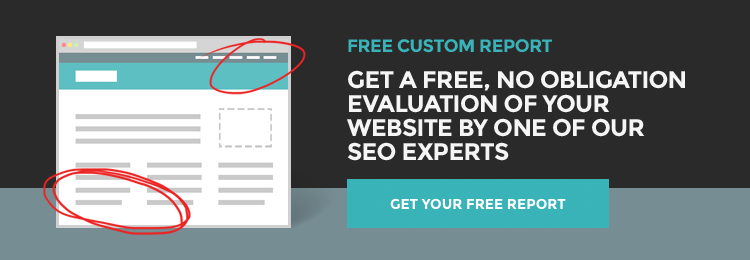
I recently found my home here at NgageContent, and part of the onboarding for my new position was reading Joe Pulizzi’s books Content Inc. and Epic Content Marketing. I was excited to read these books because as a recent college graduate, I’m eager to become an expert in content marketing. The more knowledge you have, the easier it is to come up with good B2B content marketing ideas. Pulizzi’s books are full of insight and helpful advice for everyone from entrepreneurs to people looking to grow their marketing skillsets.
The most obvious takeaway from these books was a stronger definition of what content marketing is. When I was a junior in college, I walked into career services with an idea — I wanted to find a job in content marketing. My career advisor immediately asked me what content marketing was, and I didn’t have a clear answer. After that meeting fizzled out, I left assuming the idea was a lost cause. Fast forward two years and content marketing is the field I ended up working in.
More than anything, Pulizzi’s books finally helped me clearly answer that basic question, what is content marketing?
Content marketing is owning media as opposed to renting it. It’s a marketing process to attract and retain customers by consistently creating and curating content in order to change or enhance a consumer behavior.
– Joe Pulizzi, Epic Content Marketing
Pulizzi’s books focus on this definition to make a plan to better your business through awesome, unique content. Your content has to provide something for potential customers, like an answer to a question or expert advice in a relevant area. Instead of writing about yourself and why your business is great, your content should really focus on the consumer and what they want.
I learned a great deal from reading these books, and I’m already able to implement the B2B content marketing ideas Pulizzi uses into my own work. Here is a list of my seven favorite pieces of knowledge that I gained from the books.
B2B Content Marketing Ideas That Work
1. Your Content Has To Help Your Customer
When you’re first starting out with a blog, it’s easy to think that a great post will be about what your business does, how you came to be, or something amazing that you accomplished recently. While these can be turned into great posts, they’re centered on you. Good content can’t be selfish; it needs to have your consumer in mind — but it’s not a sales pitch. Consider something that’s a common problem in your industry. As an expert, what kind of advice can you give to solve it? Rather than pushing your own products, you should focus on providing content that your consumer wants to read.
2. What’s Your Specialty?
All businesses have competition, but what sets you apart in your industry? Finding a unique angle that you can present for your readers will help you stand out, and ultimately gain more customers. Pulizzi calls this tactic the “content tilt,” where you take something common and put your unique spin on it to create something new. Think about what kind of story you can share. What can you bring to the table?
Andrew Davis, author of Brandscaping, calls this “the hook” — a simple twist on a familiar theme designed to entrap or ensnare your audience. Without “tilting” your content just enough to truly have a different story to tell, your content will fade into the rest of the clutter and be forgotten.
– Joe Pulizzi, Content Inc.
It doesn’t have to be dramatic or wildly different to work, it just needs to be something that consumers will differentiate from competitors and make them choose to read your content over something else. Consumers should want to read your content. Without a content tilt, you’re going to start feeling like you’re talking to a brick wall.
3. Take it Slow
When you’re just starting out with content, you don’t want to throw it all up at once and wait for the readers to come filing in. It just doesn’t work that way. You should start by posting a few at a time and measure the reaction. See what works and what’s struggling, and then make a plan for the next round to improve on success and grow from setbacks. Consumers need time to develop a trusting opinion of your content, but once they do, they’ll keep coming back.
4. Spread Through Social
Using social media platforms is an obvious way to spread your content to your target audience, but mastering it can prove to be a challenge. Posting too much can cause you to be ignored by followers who don’t like you hogging their news feeds, and posting too little can make followers stop seeing you as a reliable source — or not see you at all. Pulizzi suggests as a happy medium the 4-1-1 system, meaning for every six pieces of content shared, four should be from your influencer group through shares or retweets, one should be your own original creation, and one should be sales focused.
When you share the content of influencers, they notice. And you should share without asking for anything in return so that when you do need something someday the influencers are more likely to say yes.
– Joe Pulizzi, Epic Content Marketing
5. Use Third Party Channels
Repurposing content is another great way to spread your content and bring consumers back to your original site. Your chance to reach a larger audience is bigger, and if and when they share your piece, it will spread and reach more people. Taking an idea and spreading it across different channels helps you expand your reach even further, but making sure you have a plan behind it will help you execute it well. When you have an idea for a post that you think will perform well, plan to post it in different places as well as your blog, such as sites like LinkedIn or Medium. A key here is to make sure you’re not posting the same piece in each place. Instead, you should rethink the idea for the audience you’ll be writing for in each channel.
6. Be Consistent
When you’re posting anywhere, it’s important to be consistent with the amount that you post over a period of time. For example, if you’re posting three times a week, you should continue to post three times a week. It’s a bad habit to post sporadically because the chances of your content actually reaching your audience dramatically decreases. With consistent posts on your blog and social media, you’re putting content out for your audience to read at a steady rate, and the amount of readers you receive will improve.
7. Freewrite to Freedom
This last tip is one that I learned in my college writing classes, and I was happy when I saw it in Pulizzi’s books. Writer’s block is the thorn in every writers’ side, and freewriting is a saving grace. When you’re stuck in a rut with your content, try this. Don’t pay attention to grammar or spelling — just write. Whether it’s a bulleted list or a paragraph, your stream of consciousness can help you find fresh ideas. You can write about whatever is on your mind, and when you’re done you can mark what stands out and use it later.

